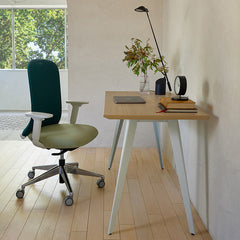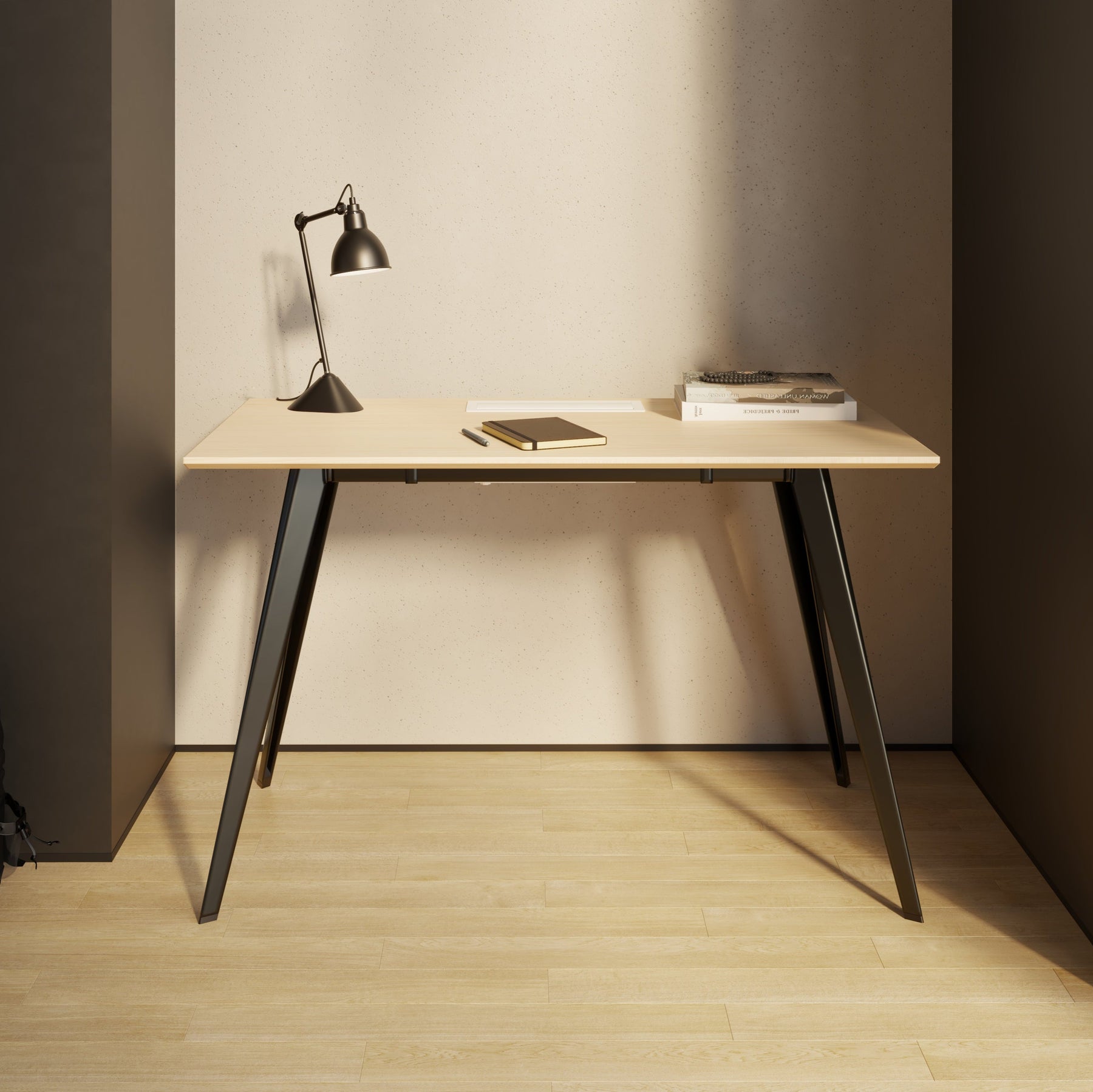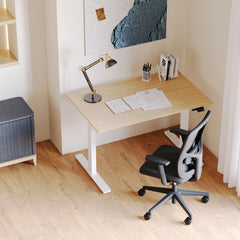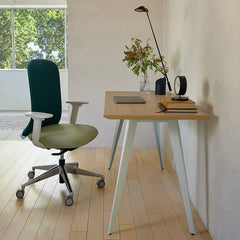Get 10% off your first order
Find the office furniture that’s designed to match your style, comfort, and needs perfectly. Subscribe
Building an Intentional Workspace to Prevent Burnout

Visit quiz page to see how we makes it easy to create an inspiring workplace


Furniture shapes how we experience work. Every curve of a chair, every inch of desk space, and every color tone affects mood and performance. A workspace that’s built intentionally isn’t just about visual appeal—it’s about how it supports your movement, focus, and overall well-being.
From ergonomic seating to flexible work surfaces, choosing the right furniture can mean the difference between exhaustion and sustained energy. Let’s explore how the right design choices make a workspace more efficient, balanced, and inspiring.
Furniture creates structure. The Small Standing Desk Oklahoma offers flexibility and function, helping you adapt between sitting and standing throughout the day. Its compact form supports a cleaner, more intentional workflow.
|
Element |
Impact |
Why It Matters |
|
Desk layout |
Defines workflow |
Improves organization |
|
Chair support |
Reduces fatigue |
Keeps posture balanced |
|
Storage placement |
Saves time |
Prevents distraction |
|
Color tone |
Sets mood |
Encourages focus |
Every piece works together to shape your experience of focus and comfort.
Ergonomics is more than posture—it’s the art of aligning the body with its environment. Furniture that fits you naturally prevents tension and promotes longevity.
Adjust desk height for neutral arm alignment.
Choose chairs with adjustable lumbar support.
Keep monitors at eye level to reduce strain.
Use footrests if needed for balance.
Comfort creates clarity. Ergonomic furniture keeps you working smarter, not harder.
Stillness drains energy. The right standing desk invites movement, refreshing your body and attention. Switching positions promotes better circulation and reduces burnout over time.
Alternate between sitting and standing every 45–60 minutes.
Use reminder apps to stretch or change posture.
Keep cables and surfaces uncluttered for free motion.
Incorporate soft lighting that adapts to both modes.
Movement keeps your workspace alive and your focus fresh.
A reliable office desk blends form and function, offering enough surface for efficiency without overwhelming your space.
|
Component |
Purpose |
Outcome |
|
Clear workspace |
Reduces stress |
Increases focus |
|
Adequate depth |
Supports movement |
Avoids clutter |
|
Storage zones |
Keeps items accessible |
Boosts productivity |
|
Clean surface materials |
Prevents reflection |
Maintains visual ease |
Simplicity builds momentum—your workspace should feel calm, not crowded.
Work quality improves when your surroundings feel organized and comfortable. Good furniture removes friction, letting your mind flow freely.
Proper seating height improves breathing rhythm.
Warm wood tones reduce tension.
Smooth desk edges support longer concentration.
Decluttered areas lower mental load.
Focus grows naturally when the environment feels right.
According to the ergonomic furniture study, workspace design directly influences mental clarity and physical comfort. Well-crafted pieces promote posture alignment, reduce musculoskeletal strain, and enhance engagement.
Adjustability reduces repetitive strain injury risk.
Balanced materials improve long-term durability.
Visual comfort impacts emotional well-being.
Proper proportions improve task performance.
Science confirms what comfort already tells us: how we sit, move, and work matters deeply.

Shared environments benefit from flexible configurations. A quad workstation supports team collaboration while maintaining individual focus zones.
Create visual divisions without barriers.
Use neutral colors to unify open layouts.
Incorporate sound-absorbing materials.
Arrange desks for both eye contact and personal space.
Collaboration thrives when furniture shapes communication, not competition.
Durable furniture is sustainable furniture. High-quality pieces reduce waste, maintain comfort, and age beautifully.
|
Material |
Strength |
Maintenance |
Aesthetic |
|
Solid wood |
High |
Easy care |
Warm, timeless |
|
Metal |
Strong |
Minimal |
Industrial, sleek |
|
Laminate |
Moderate |
Easy clean |
Smooth finish |
|
Glass |
Fragile |
Regular cleaning |
Modern minimalism |
Longevity isn’t about trends—it’s about thoughtful investment.
Comfort goes hand-in-hand with health. A supportive setup—including an ergonomic arm accessory—keeps movement smooth while reducing tension in shoulders and wrists.
Position monitor at natural eye height.
Maintain consistent desk organization.
Stretch lightly between meetings.
Keep water nearby to promote hydration.
Physical comfort fuels mental strength.
A workspace that feels visually peaceful reduces stress and promotes confidence. Colors, shapes, and texture all influence how you experience work.
|
Element |
Suggestion |
Benefit |
|
Color palette |
Soft neutrals and greens |
Promotes calm |
|
Shape |
Rounded edges |
Feels welcoming |
|
Lighting |
Natural or warm tones |
Reduces fatigue |
|
Texture |
Smooth wood and fabric |
Adds balance |
Your environment should encourage emotional recovery, not constant alertness.
Poor-quality furniture drains productivity and increases fatigue. Discomfort interrupts focus and impacts long-term health.
Regular neck or back pain.
Difficulty concentrating after short sessions.
Uneven surface heights or posture misalignment.
Frequent adjustments due to discomfort.
Ignoring these signs turns furniture into a barrier instead of a foundation.
Workspaces must evolve as workstyles change. Adjustable pieces and modular layouts make it easy to transition between tasks or teams.
Invest in adjustable furniture.
Opt for mobile components.
Choose modular storage options.
Keep design open for rearrangement.
Adaptable spaces stay useful as needs evolve.

The best workspace supports your energy, not drains it. Choosing high-quality furniture ensures your body, mind, and workflow stay in harmony.
Comfort equals sustained productivity.
Function and beauty coexist naturally.
Thoughtful furniture improves your daily rhythm.
A balanced workspace shapes lasting motivation.
When your workspace feels like a partner, not a pressure, work becomes a steady, rewarding experience.

Building an Intentional Workspace to Prevent Burnout

The Beauty of Order: Desk Designs That Inspire Clarity

Design Choices That Bring Calm to Your Workspace
Get 10% off your first order
Find the office furniture that’s designed to match your style, comfort, and needs perfectly. Subscribe
Leave a comment